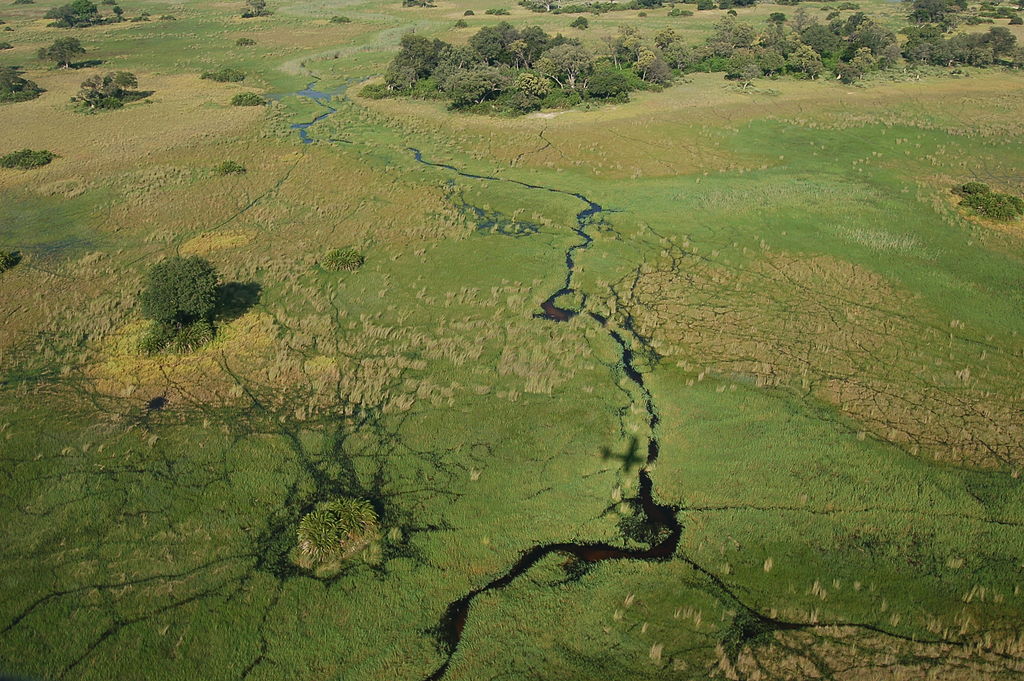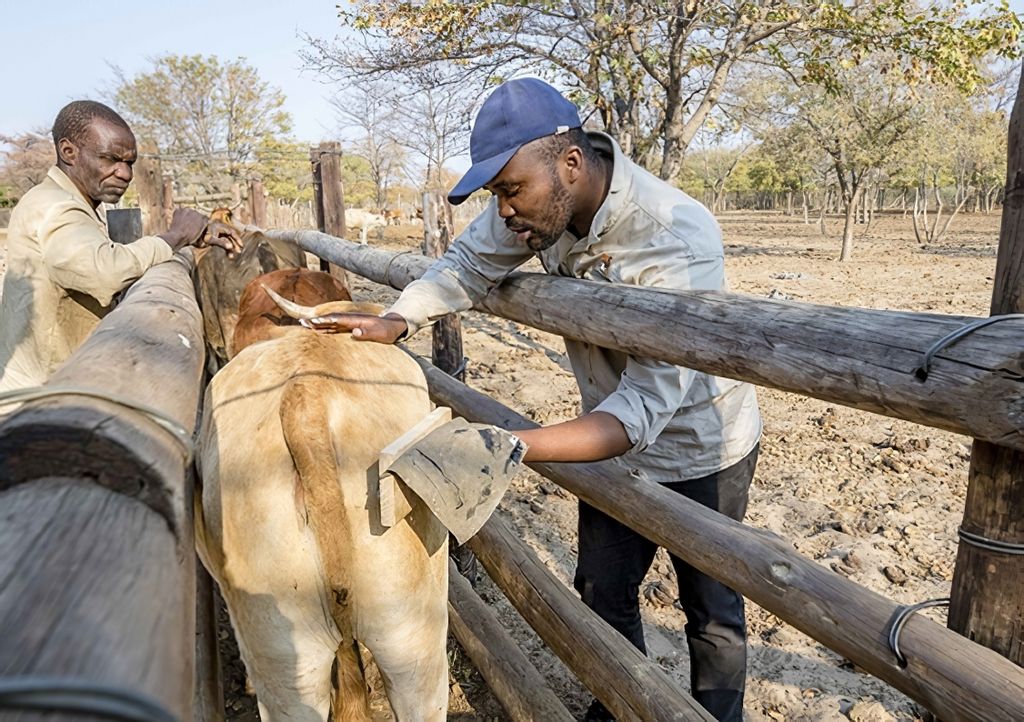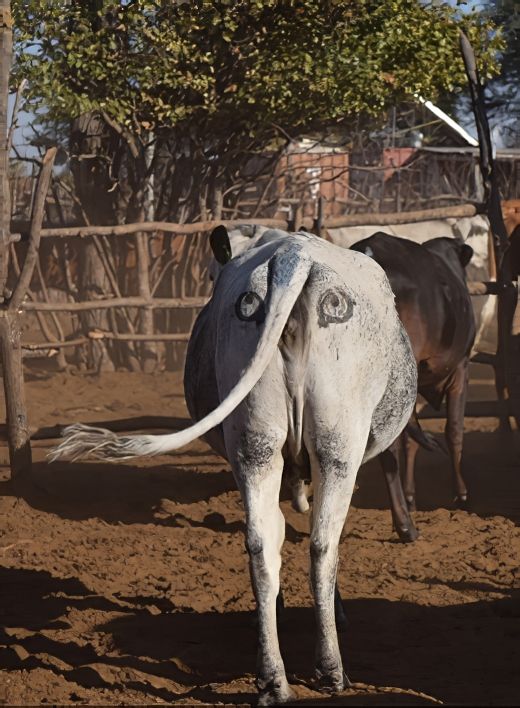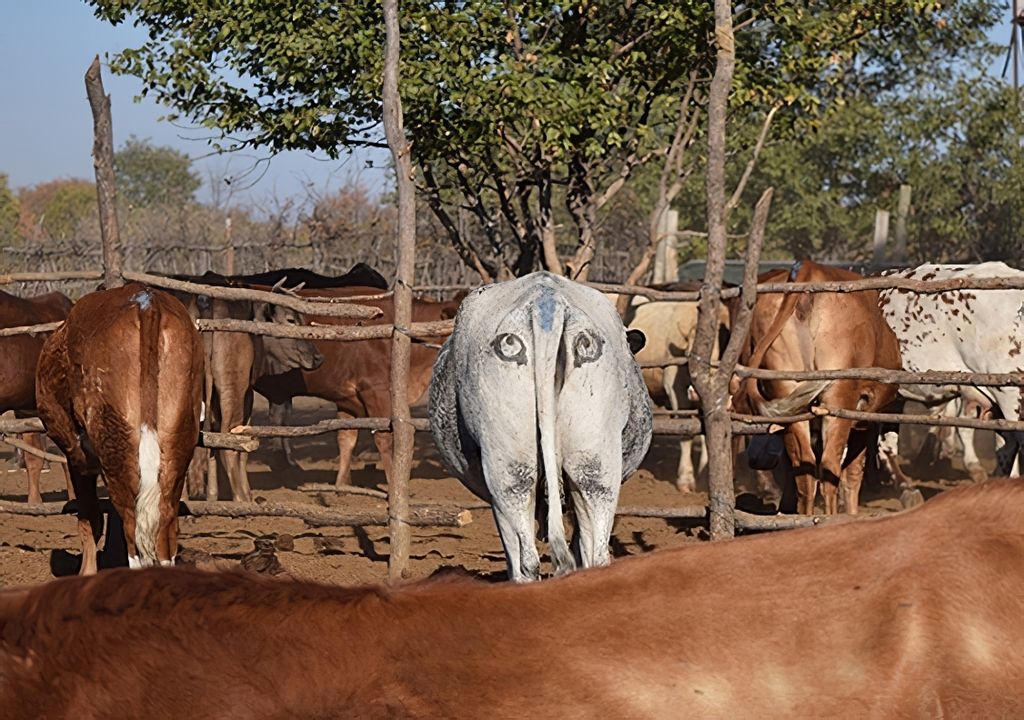Okavango Delta, Botswana —(Map)
An unusual experiment in Botswana suggests that painting eyes on the rear ends of cows may help protect them from large predators like lions. Protecting cows could also wind up protecting the lions – from angry farmers.
Large predators like lions are under pressure. Much of the land they used to roam has been taken over by humans. Many are hunted illegally. One serious threat to large predators comes from farmers, who often shoot or poison them after losing farm animals to their attacks.
This has long been a problem in the Okavango Delta.

(Source: Joachim Huber [CC BY-SA], via Wikimedia Commons.)
The Okavango Delta is a swampy area where the Okavango River empties out. With its waters spreading out over thousands of square miles, the area is a hugely important location for many different kinds of wildlife, including many large predators.
Some parts of the Okavango are protected, but there are also many small farms in the area, with between 6 and 100 cows. Lions are the biggest threat to cattle (cows) in the area.
😕
This image has not been loaded because of your cookie choices. To view the content, you can accept 'Non-necessary' cookies.
Some parts of the Okavango are protected, but there are also many small farms in the area, with between 6 and 100 cows. Lions are the biggest threat to cattle in the area. In the daytime, when many predators are most active, the cattle are allowed out to graze.
At night, farmers normally keep their animals in closed areas protected from predators. But in the daytime, when many predators are most active, the cattle are allowed out to graze (eat grass).
Scientists from the University of New South Wales wondered if painting pictures of eyes on the cows’ rear ends might protect them. The idea isn’t as strange as it may sound. There are many examples of animals such as butterflies or fish using fake “eyes” to protect themselves.

(Source: Bobby-Jo Photography, via UNSW.)
The scientists also knew that animals like lions like to sneak up on their prey. If they feel like they’ve been spotted, they often give up and look for another target.
Working with over 2,000 cows on 14 different farms in the Okavango area, the scientists tested their ideas in a four-year study.

(Source: Radford, C., McNutt, J.W., Rogers, T. et al., Nature.)
The researchers separated the cows into three different groups. They painted large eyes on the rear ends of one group of cows. The second group got simple Xs. The final group got nothing.
The eyes worked very well. Of the 683 cows with eyes painted on them, none were killed in the four year period. Cows with nothing on their rear ends didn’t do so well. Fifteen of the 835 cows with bare backsides were killed.

(Source: Ben Yexley, via UNSW.)
The scientists were surprised to learn that even Xs seemed to give the cows some protection. Only 4 of the 543 cows with Xs were killed.
Though the results seem to reveal a simple way to protect cattle from lions, the scientists caution that the method may have weaknesses.

(Source: Ben Yexley, via UNSW.)
For example, in the experiment, there were always cows without fake eyes. The researchers aren’t sure the eyes would work so well if all of the cows had them. Also, over time, predators might learn to ignore fake eyes.
Still, for now, it seems like a cheap and easy way to protect cows in the area. And by protecting cows, the eyes will also be looking out for what’s best for the lions.
😕
This map has not been loaded because of your cookie choices. To view the content, you can accept 'Non-necessary' cookies.
